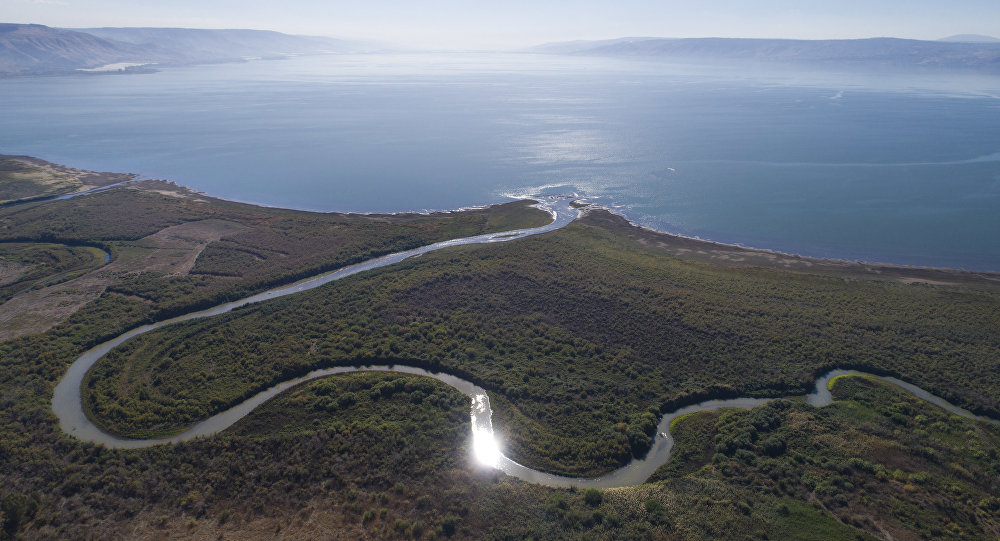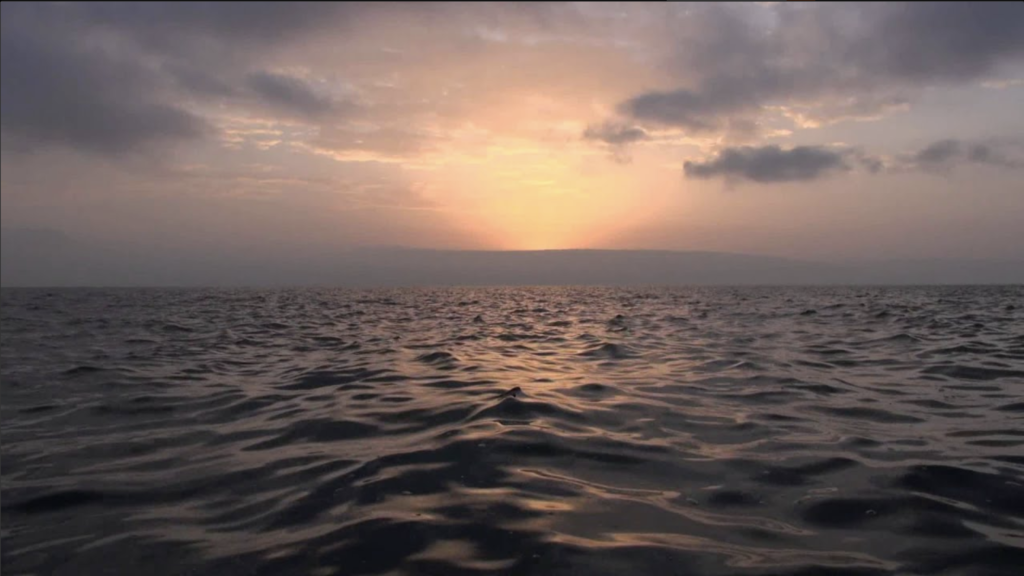The State of Israel is not just a biblical modern day miracle; it also features a number of geographical wonders that are unique worldwide. One of these is the Sea of Galilee, which, at 209 meters below sea level, is the lowest freshwater lake on Earth! The other lowest lake in the world is the Dead Sea, which is a saltwater lake. Not bad for a country the size of New Jersey.
Fed partly by underground springs, the Lake’s main source of water is the Jordan River (and a few smaller tributaries) which flow through it down to the Dead Sea in the south. Called by different names throughout its history according to the various empires, seasons and communities on its shores, with the changing of times the Lake’s name also changed. Called the Sea of Kinneret, Sea of Ginosar, Sea of Galilee, Sea of Tiberias, the name that prevailed and made its way into Modern Hebrew is Kinneret. This is the way in which it first appeared in the Bible (Numbers 34:11, Joshua 13:27) where it is actually spelled כנרות “Kinnerot,” which is a plural noun in Hebrew.
This Modern Hebrew name relates to a popular etymology originating from the Hebrew word kinnor, meaning “harp” or “lyre,” possibly relating to the shape of the lake. And though scholars still debate the origin of the actual name, most Israelis deeply connect with the musical reference of the name and have fully embraced it by now with affection.
In the New Testament, Luke called it the “Lake of Gennesaret (Luke 5:1), referring to the fertile plain of Ginosar that lies on the western shore of the Lake and is the site of ancient Magdala and the modern Genosar Kibbutz. Mathew, Mark and John, however, called the lake the “Sea of Galilee” or the “Sea of Tiberias,” reflecting the strong connection to the broader region and to the ruling Roman Emperor.
For Christians, the region is extremely important since most of the ministry of Jesus took place along the shores of the Sea of Galilee. During that Second Temple era, towns and fishing villages were spread all around the lake, and the Gospels give us an account of a very dynamic, busy and fruitful region.
Some of the disciples were recruited from the very shores of the Kinneret; and the majority of Jesus’ recorded miracles, teachings and parables were given in that region. These include His walking on the water, calming the storm, the miraculous catch of fish, the feeding of the five thousand and of course the Sermon on the Mount. No wonder some scholars refer to the Kinneret as the “Fifth Gospel.”
With the arrival of Jewish pioneers during the early years of the 1900’s, the lake and the region would take on great importance. They began to cultivate the neglected region, drain the swamps, and establish cooperative farming villages (kibbutzim) in the vicinity of the lake. Following the establishment of the State of Israel, the Kinneret Lake was linked to the country’s new water infrastructure by the National Water Carrier, a project that has since been replaced by other water sources to preserve the Lake from being over-pumped. Following repeated years of draught and dry winters, the government of Israel approved a plan in 2018 to replenish the Lake artificially by pumping desalinated Mediterranean water into it in an effort to stop the water level from plunging below the point of irreversible ecological damage, a plan that is presently being studied.
Tourism naturally abounds around the Sea of Galilee as historic and biblical sites attract both local and international tourists. The majority of the visitors are Christian pilgrims eager to see the actual places where Jesus lived, taught and performed miracles. But not only spiritual reasons bring the visitors. Another key attraction is the Lake itself which became a very popular vacation and recreation spot for many Israelis with public beaches and water parks all around the Sea of Galilee. The robust economy, apart from tourism, includes fishing and orchards of bananas, dates, mangoes, grapes, olives and a whole lot more. The warm waters of the Sea of Galilee support a rich variety of flora and fauna, with the most famous fish being the “St. Peter’s Fish” that many guests enjoy while dining by the Lake.
Originally posted at Sar-El Tours.


